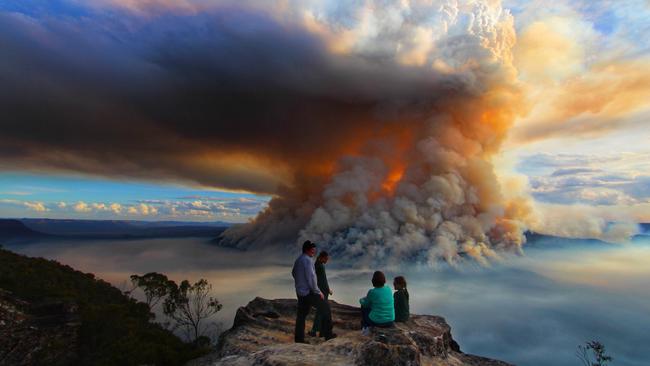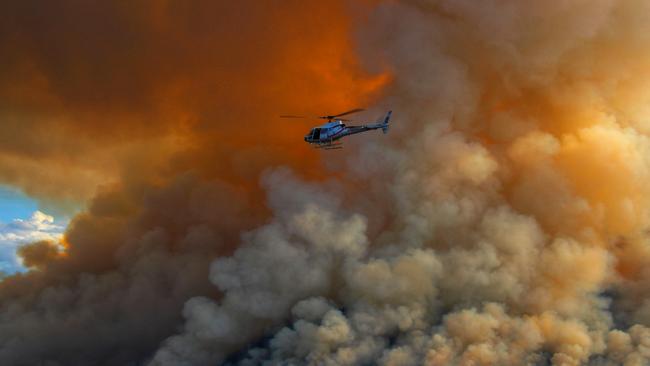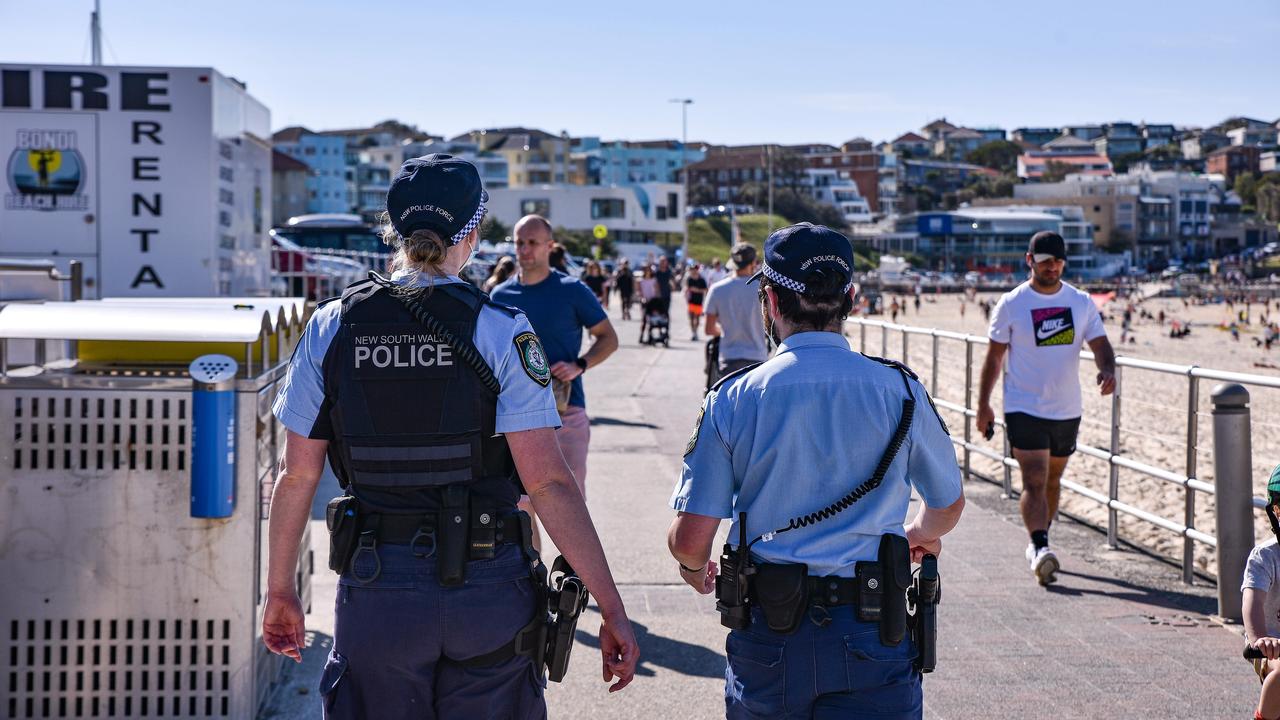Mountain burn-off produces a sight for sore eyes
Visitors to the Blue Mountains are experiencing a sight not seen in close to 60 years.

Visitors to the Blue Mountains are experiencing a sight not seen in almost 60 years as the rolling valleys surrounding the Three Sisters fill with plumes of smoke.
The NSW Rural Fire Service and NSW National Parks and Wildlife Services have embarked on an ambitious hazard-reduction exercise in an area that hasn’t burned in more than half a century. The 3500ha burn of Mount Solitary, south of Katoomba, was lit at 10am on Tuesday and is expected to finish today.
NSW Rural Fire Service inspector Ben Shepherd told The Australian the tactical blaze had been “doing really well”, despite the challenges involved in an undertaking of its size. “It’s a technical burn and they’ve been doing some great work in some very difficult terrain,” Mr Shepherd said.
“It’s a burn they’ve been wanting to do for a number of years, in an area that hasn’t burned in almost 60 years.”
The burn-off will “reduce the fuel load” and, with it, the risk to the towns of Katoomba, Leura and Wentworth Falls. “It’s good to get some protection for those upper Blue Mountains communities,” Mr Shepherd said.
About 45 firefighters are involved and there are “a number of helicopters on hand”. “It’s a big fireground,” Mr Shepherd said, “so it requires a big, co-ordinated effort to conduct something of this magnitude.”

He said firefighters had taken advantage of this week’s fine conditions before winds and a cold snap arrive tomorrow.
He said the Mount Solitary burn had been delayed “for around a decade”, and had last been rescheduled in April, after “catastrophic winds” resulted in the Holsworthy fire that saw thousands of hectares burn out of control in Sydney’s southwest.
Mr Shepherd reminded residents of the Blue Mountains to watch for reports on the direction of smoke plumes, and to keep abreast of changes in air quality, especially if they have respiratory issues.
“Try and stay indoors if you have asthma or lung conditions,” Mr Shepherd said. “Information on hazard reduction activities and fires are available at the Rural Fire Service and our ‘Fires near me’ app.”
The RFS meticulously plans hazard-reduction burns across NSW each year, usually conducting them in autumn and spring.



